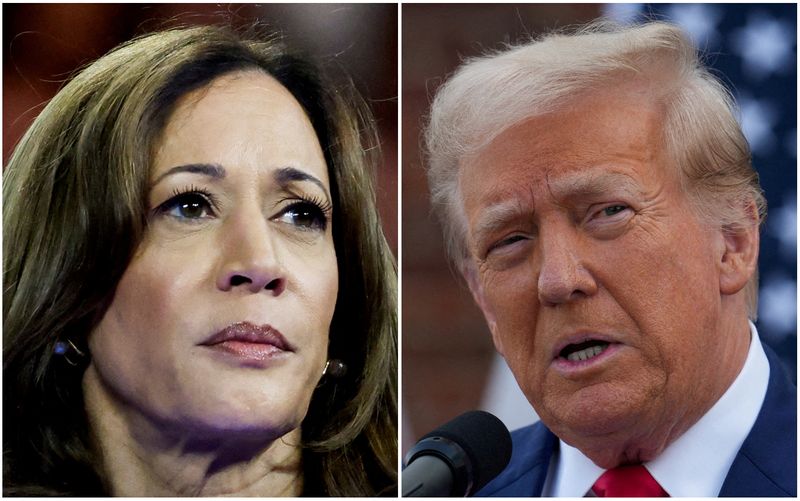By David Lawder
WASHINGTON (Reuters) - Republican presidential candidate Donald Trump's tax and spending plans would produce more than twice as much new debt as the plans from Vice President Kamala Harris, a budget-focused think-tank estimated on Monday.
The Committee for a Responsible Federal Budget, which advocates reducing federal deficits, released new detailed estimates showing Harris' tax and spending plans would add $3.5 trillion to deficits over 10 years, while Trump's would add $7.5 trillion.
That's the CRFB "central estimate" in a range of potential outcomes from ideas voiced by both candidates on the campaign trail. It also included high and low estimates, including for Harris zero added debt on the low end and $8.1 trillion additional debt on the high end. Trump's low-end estimate would add $1.45 trillion in debt, while his high-end estimate would add $15.15 trillion.
TAX, SPENDING PROMISES
Trump has promised a range of tax breaks including extending all of the 2017 individual tax cuts due to expire next year and eliminating taxation of income from tips, Social Security and overtime pay. His only major revenue-raising provision would be to increase tariffs, which would raise $2.7 trillion according to the central estimate.
Harris has pledged to increase the Child Tax Credit and add a bonus $6,000 credit for newborns, boost spending on child and elder care, and offer a $25,000 tax credit for first-time homebuyers, but increase taxes on corporations and households earning $400,000 or more. These increases would raise $4.25 trillion in the CRFB central estimate.
The more detailed CRFB findings are consistent with a Reuters roundup of previous budget estimates, including a less-comprehensive analysis from CRFB, showing that Trump's plans would pile up significantly more debt than the Harris plans.
The estimates drew criticism from both campaigns. A Harris spokesperson disagreed with the CRFB estimates that her proposals would add to deficits, saying that as president, Harris would reduce them, citing her pledges to pay for policy plans.
Trump senior adviser Brian Hughes dismissed the CRFB estimates, saying that the group opposed the 2017 tax cuts and supported the Biden administration's Inflation Reduction Act, passed with Harris' tie-breaking vote in the U.S. Senate.
"President Trump's plan will rein in wasteful spending, defeat inflation, reduce the burden of interest costs, and ignite economic growth that fuels federal revenue, so we can make our economy great again," Hughes said in a statement.

The CRFB estimates measure the amount of additional spending and revenues from the candidates' proposals compared to the current-law baseline as measured by the Congressional Budget Office.
That baseline, which assumes that the 2017 tax cuts expire at the end of 2025 and individual rates snap back to their prior, higher rates, already calls for a 10-year deficit increase of $22 trillion, including nearly $2 trillion for the 2024 fiscal year that ended on Sept. 30.